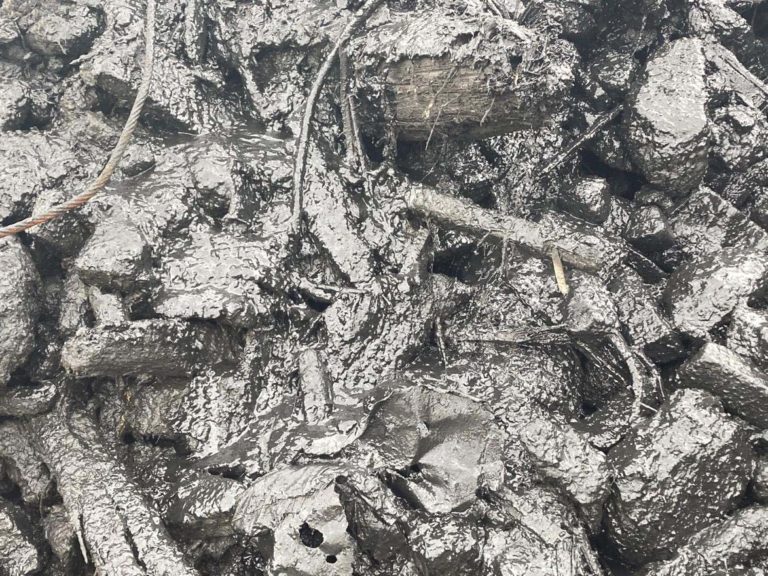INTRODUCTION
Dredged material is processed according to the Level 1 Archaeological Monitoring protocol outlined in the draft Cultural Resource Monitoring Plan (revised September 2020). This protocol calls for dredged soft sediments to be placed directly into barges, floated to the processing facility, and screened over bars on a vibrating platform. Items removed during the vibratory screening process are then sorted by trained personnel as per the Cultural Resource Monitoring Plan. Items of potential interest (possible artifacts or objects of local interests) are placed in a separate stockpile and photographed for archaeologists to review. These items are then placed in a holding area for archaeologists to inspect. To date, the vast majority of the recovered items consisted of modern debris and timbers.
RESULTS
An archaeologist conducted a scheduled site visit on 3/4/21 to review the recovered items in person with the assistance of a dredge material processing facility machine and operator to sort through stockpiled items. Photographs were taken of stockpiled items.
The material was spread by machine on a flat hard surface to allow for an archaeologist to clearly review them (Photograph 1). The viewing area had a moderate sludge layer on the surface (Photograph 1). The material appeared to have been previously rinsed. (Photographs 2 and 3). The material reviewed was unsorted and comprised mainly of rocks and small pieces of wood, tires, miscellaneous metal (Photographs 4 and 5), car parts and a few large timbers (Photograph 6). Two items were recovered and are recommended for retention and further assessment: A copper valve with the manufacturing stamp ‘Larkin MFG Co. Patented Daytona OH. USA’ (Photograph 7), and a metal and wood hand truck with ‘American Steelite’ stamped on the rubber wheel (Photographs 8 and 9). A cursory Google search on both companies suggests that the hand truck may be later-20th century, while the brass valve may be part of a fire suppression apparatus and is likely old enough to be of historical interest. More research on these items is recommended. Both items have been stored on site.


and unrinsed (in between) material to be reviewed on 3/4/21, front view.

stockpile to be reviewed, front view.


the stockpile to be reviewed, front view.




ITEMS SEPARATED FOR FURTHER REVIEW
The archaeologist retrieved two items to retain for further analysis: One copper valve and one metal and wood hand truck.
CONCLUSIONS AND RECOMMENDATIONS
The archaeologist concludes that two items, a copper valve and hand truck, recovered during the sediment screening on 3/4/21 retain possible historic/archaeological significance. Per the draft Cultural Resource Monitoring Plan, the archaeologist further recommends that all the non-historically/archaeologically significant debris that has been reviewed by the archaeologist as of 3/4/21 may be disposed of.

